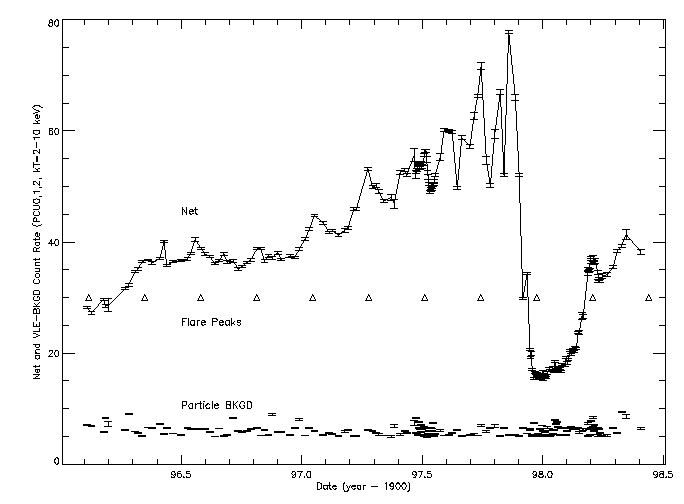HST Image Credit: Jon Morse Eta Carinae is an extremely massive star in our galaxy, and an extremely unstable one. It is notorious for erupting in the mid-19th century, and is presently surrounded by the ejecta from this eruption. Recent optical and near IR observations (Damineli) suggest that certain spectral emission lines vary with a period of 5.52 years, implying that Eta Car may be two stars, not one! Eta Car emits X-rays from the ejecta as it expands into the circumstellar medium near the star, and from a point-like source centered on the star itself. Since early 1996, a team led by Mike Corcoran have been monitoring the X-ray flux from this region using RXTE. The sampling rate has been roughly once every two weeks, with limited intervals of daily observations. The RXTE light curve in the 2-10 keV band is the first of its kind for Eta Car, or any massive star for that matter. The flux variations confirm the 5.52 year variation proposed by Damineli, and also show noticeable peaks in the emission which seem to recur every 85 days. If Eta Car is a binary, the X-ray emission could arise at the shocked interface created by the collision of the wind from the primary with the wind or surface of the secondary. The cause of the 85-day flaring is a mystery. Some likely causes are:
As RXTE continues to provide the first detailed monitoring of the X-ray flux of Eta Car, coordinated observations are encouraged to helps shed some light on these burning questions.
Figure 1: RXTE light curve of Eta Car (2-10 keV).
Figure, Caption and supporting text provided by M. Corcoran Back to Snazzy Science If you have a question about RXTE, please send email to one of our help desks.
|




